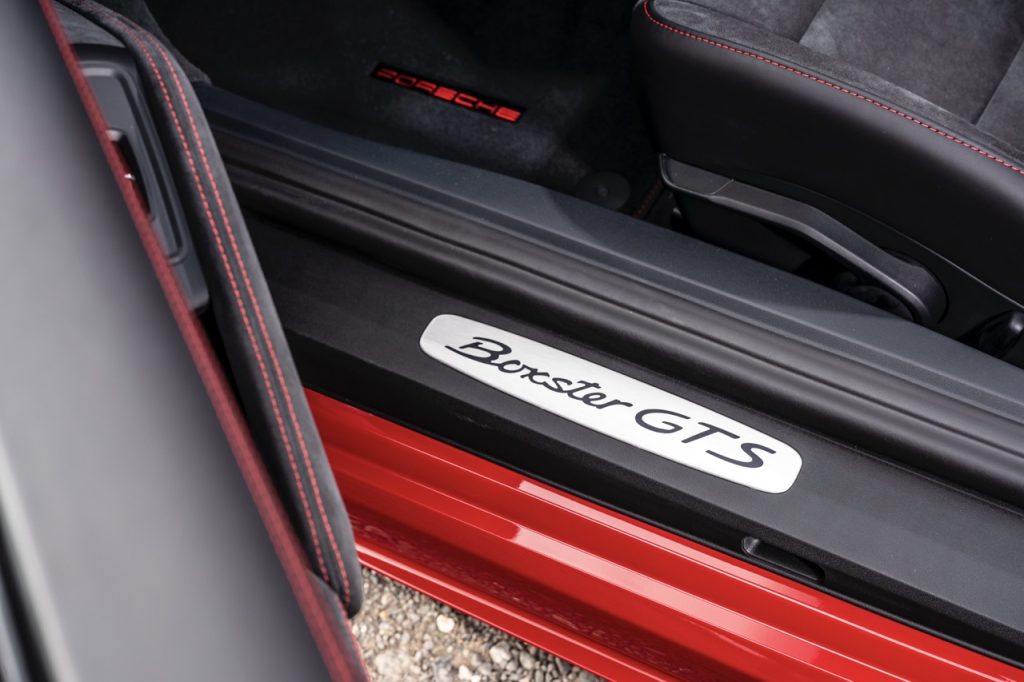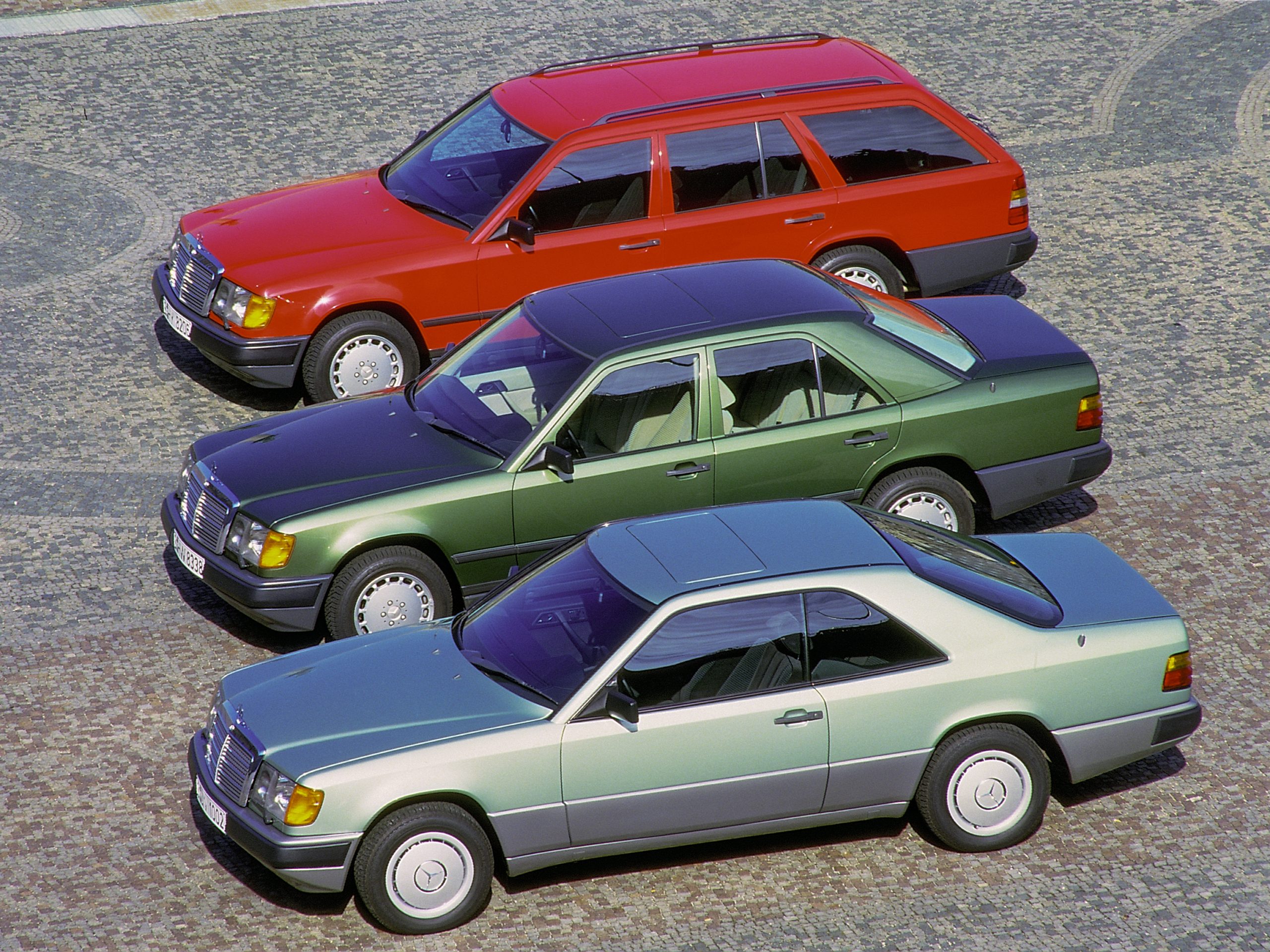It takes a moment to appreciate the silence when you first drop down into the sculpted driver’s seat of the Porsche 718 Boxster GTS 4.0. There are no persistent warnings binging at you, just a superbly crafted cabin that feels very much bespoke rather than off the peg. A moment to savour, then, before the hush is broken by firing up the defining feature of this car – the normally aspirated 4.0-litre flat-six motor sitting right behind your lower back.
And what a noise it makes when you turn the key! Yes, you still have that tactile delight with this sports car, rather than some red button to press. Beyond the noise, this engine is special because it represents a high-water mark for the Boxster: The next generation of Porsche’s two-seat, entry-point sports car is set to be all-electric. It will replace the combustion-powered Boxster from 2025, so we should make the most of cars like the GTS 4.0 while they are still rolling down the line.


You could save yourself about a quarter of the price of the GTS by opting for the base 718 Boxster, which is no slouch. However, it comes with a 2.0-litre turbocharged four-cylinder motor and, let’s be honest, it doesn’t sound as good as a Porsche flat-six. Nor does it provide quite the same detail when it comes to the way it builds revs or propels the car forward. All of this is what makes the GTS so special, and pricier, and why it is arguably the best road-going Boxster ever made.
To qualify that claim, we must also address the Porsche 718 Spyder RS. It comes with a 3996cc flat-six, which is a single cubic centimetre more than the GTS’s engine, and sports 500bhp to the 400bhp of the GTS. In a straight line, it means the Spyder is good for 0–62mph in 3.4 seconds and a 191mph top speed, where the GTS only manages 4.5 seconds and 182mph with the manual transmission. Opt for the PDK dual-clutch gearbox in the GTS and 0–62mph drops to 4.0 seconds, though top speed is reduced by 3mph, which clearly you’ll miss on every drive.

Specs: Porsche 718 Boxster GTS 4.0
• Price: £77,300 (base)
• Powertrain: 4.0-litre flat-six, six-speed manual transmission
• Horsepower: 400bhp
• Torque: 310lbft
• Layout: Rear-wheel-drive, mid-engined, two-door, two-passenger sports car
• Weight: 1480kg
• Fuel economy: 25.9mpg
• Competition: Alpine A110, BMW Z4, MG Cyberster
On paper, the Spyder is the boss, but then you have to live with its finicky roof and harsher ride, and it means that car is, as intended, a Boxster for the weekend. The fundamental appeal of the Boxster, however, has always been its all-round, everyday brilliance. Step back into the limelight, then, GTS, and take a bow as the flat-out Boxster you can use as Porsche originally intended. As a way to sign off the model’s internal combustion era, it couldn’t be more of a flourish.

There is one key point the GTS has in common with the Spyder that buyers of this Boxster should consider carefully, though, and that’s which transmission to choose. With the Spyder, you get the seven-speed PDK dual-clutch auto and that’s your lot. With the GTS, you have the option the six-speed manual or the PDK. That extra ratio compared with the manual makes quite an impact on how the two choices interact with the driver. Don’t panic, this isn’t going to be a rant against auto ’boxes in sports cars – Porsche’s PDK is far too good for that to be a consideration. In fact, there’s a strong argument to pick the PDK, as its ratios are more closely stacked to give it a more instantaneous reaction to throttle inputs. The slightly broader, but noticeable, reach between the manual’s second, third, and fourth gears means you have to wait half a breath longer before changing and wind the engine out to its peak to get the very best from the car. For some, that’s all part of the fun; for others, it could end up being a chore.
Hand on heart, we’d still take the manual, as the stubby stick that seems to poke up quite high in the centre console is really placed just where it needs to be and has a short, methodical shift. It encourages you to play with the gears, experimenting just how many you can drop down on the approach to a corner and then letting that 4.0-litre engine reveal its full potential on the exit. Pedals that are ideally spaced for heel-and-toe changes add an extra layer of interactive pleasure. As more fast cars abandon manual transmissions, the GTS ably demonstrates why they plug you into the experience more thoroughly.

It helps when there is an engine of this pedigree behind you. It has enormously broad shoulders to push the Boxster to higher speeds and never sounds anything but gorgeous while doing so. Press the button on the transmission tunnel for the sport exhaust and there’s a bit more bass and noise, but nothing uncouth.
It also helps the GTS that, like every other Boxster, the engine is mounted in the middle of the chassis. While some mid-engined cars can feel a bit tippy-toed in the wet or when pressed near their limits, the Boxster is a real pussycat. Yes, it has the claws to snare the careless, but drive it with even a modicum of deference to the laws of physics and it’s astounding the progress you can make on switchback roads. Even driving the GTS on the tank traps that masquerade as the UK’s A-roads, this Boxster refuses to be flustered or wrong-footed. It allows you as the driver to simply get on with the job in hand – enjoying the drive and exploring what this car is capable of.

The compliant ride makes the GTS easy to use all day, every day, too. You can hop in and head to work or plot a course to the other end of the country (or continent) and the Porsche will just get on with it. The comfort is underpinned by excellent seats, which were the upgraded Sports Seats in our test car with 14-way electric adjustment. A pretty much perfect driving position is another point in the Boxster’s favour, and it even has good all-round vision despite being a low-slung roadster. This still applies when the electrically operated hood is raised, and the GTS is more than refined enough with the hood up for high-speed journeys without inducing tinnitus.





When it comes to slowing down, the 350mm front and 330mm rear discs are more than meaty enough for the job. Even repeated hard use on undulating, flik-flak roads doesn’t bring on any fade or deterioration in their performance. You can also lean on the brake pedal good and hard without triggering the anti-lock system in the dry, which again puts the driver in charge of the action rather than the car’s systems. This is the key to the Boxster’s appeal, and in particular the GTS that brings more power and performance to the mix. Instead of giving this ability to customers and then wagging an electronic finger when they attempt to use it fully, Porsche places the safety just far enough away so you have to make the right decisions. It’s what driving is all about, and this Boxster celebrates that in joyous fashion, so grab one while you can and keep hold of it.
Porsche 718 Boxster GTS 4.0
Highs: The engine, the handling, the noise, the feel.
Lows: Manual transmission ratios could be closer spaced.
Takeaway: Not the out-and-out fastest Boxster, but the best in the real-world.











At the start of this article, you introduce the Spyder RS as the counterpoint to the GTS. And then you compare the transmissions lower down by saying “With the Spyder, you get a six-speed manual and that’s your lot”.
You are misleading readers, since that isn’t true. The Spyder RS is only available with the PDK.
I suggest you correct your error.
Fixed, thanks Andrew.
Great – feel free to delete my comment, since it is no longer relevant.
Have had a 986s Manual, 981s PDK and currently have a 2024 718 GTS Boxster Manual. If you really want a track car then just get the Cayman GT4. Brilliant Track car.
To me the Spyder sits in no mans land with a harsh ride, fiddly roof and not as quick ultimately as the GT4. The GTS Boxster is a fabulous road car.
A succinct and spot on review! On to my fifth Boxster… top-down, mid-engine with manual is it for me. My run-around is a 987S 3.4… took delivery of my GTS 4.0 two years ago – and on learning of imminent EV, put a deposit on another that arrived last month. Short shift from the Spyder recently installed by Porsche Melbourne (Aus) and really compliments the experience. Yes, the gearing could be a tad closer… but not a major issue. I’m not interested in tracking or driving in second all day. As long as the car’s engine isn’t labouring. A true everyday car. The sweet spot. Spyder…stunning but strictly a weekender. The Boxster (and Cayman) – amazing vehicles that unfortunately are the end of an era. I highly recommend a manual MX-5 as a less expensive option that delivers a rewarding experience on a daily basis. Stay Safe!